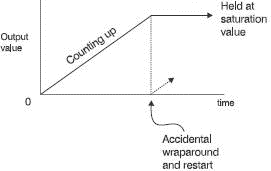Книга: Introduction to Microprocessors and Microcontrollers
The MMX Pentium
The MMX Pentium
MMX (MultiMedia eXtensions) is an addition to the standard Pentium designed to increase the speed of multimedia, communications and other applications where large numbers of repetitive calculations are required.
It started by analysing a wide range of typical applications: graphics, video, games, speech recognition etc. Intel was looking for time-consuming common characteristics. Many were found in which a fairly simple instruction like changing the colour of a pixel is applied to a large number of pixels. This gave rise to the idea called SIMD (Single Instruction Multiple Data). Using SIMD, we can perform the same operation on multiple bits of data, and this is executed in parallel. MMX allows eight pixels to be moved around and process them together. SIMD is the heart of MMX.
MMX technology maintains full compatibility with previous instructions and has added a further 57 instructions. No danger of the RISC approach here!
MMX instructions take over control of the eight floating-point registers and it has a further eight registers for holding addresses, loop control, data manipulation instructions etc. The floating-point registers are highly flexible in that the 64-bit mantissa section can be used for eight separate bytes, four 16-bit words, two 32-bit ‘doublewords’ or a single 64-bit ‘quadword’.
Saturation arithmetic
In normal fixed-point arithmetic adding two numbers can cause an overflow to occur and the msb can be lost. To take a simple example, adding the number 1 to the byte 1111 would give the result 10000. This would offer the result of zero and an overflow would have occurred as seen in Chapter 4. To check for the overflow, the microprocessor would have to take time out to check the status register to see if the overflow flag has been set. This is time consuming. When applied to graphics, perhaps shading, the sudden return to zero may cause a sudden and unwanted change in colour.
Saturation arithmetic ensures that any increase that would cause a wrap-around effect of returning the value to zero is prevented (see Figure 12.2). If we counted up from 0000, the Pentium would allow the count to proceed normally until it reached the maximum value of 1111 and it would then be held at that value. The colour in our example would reach black but would be prevented from accidentally returning to white.

Figure 12.2 Saturation arithmetic prevents wraparound
- 4.4.4 The Dispatcher
- About the author
- Chapter 7. The state machine
- Appendix E. Other resources and links
- Example NAT machine in theory
- The final stage of our NAT machine
- Compiling the user-land applications
- The conntrack entries
- Untracked connections and the raw table
- Basics of the iptables command
- Other debugging tools
- Setting up user specified chains in the filter table




